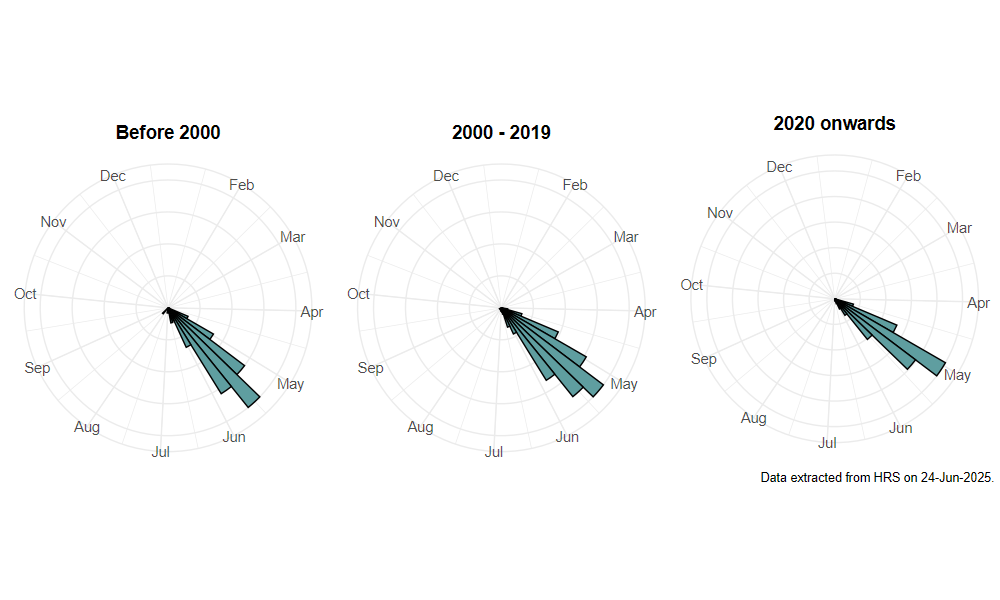Xanthogramma citrofasciatum (De Geer, 1776)
Identification
Identification difficulty = 2. ![]()
![]() according to Ball & Morris, 20241
according to Ball & Morris, 20241
Synonymy
Xanthogramma festivum (Linnaeus, 1758).
Biology
The larva has been found under turf and stones, and in Lasius nests, where it was once claimed they were fed by worker ants. In fact, it is more likely that they feed on ant-attended root aphids. It is generally found in grassy places such as meadows, coastal grazing marsh, large gardens and woodland rides, and is frequently associated with dry grassland on chalk and limestone. Such situations suggest that the yellow ant Lasius flavus may be a likely host species. Adults fly low amongst the vegetation and visit a variety of flowers.
Flight period
The following plots show the number of unique records per week excluding those reported to be of immature stages.

Distribution
This is much the least frequent of the two Xanthogramma species, and whilst widely scattered over the southern half of Britain north to the Lake District, it remains rather scarce. The majority of records are from calcareous grassland habitats.

Trends
The following plots show the Frescalo TFactor vs year and a map of the rescaled frequency (all records) for the species.
-
Ball, S., & Morris, R. (2024). Hoverflies of Britain and Ireland. WILDGuides (3rd ed.). Oxford: Princeton University Press. ↩